Reflecting back on the summer of 1923 Xanti Schawinsky recalled, "one day, during a break, a tennis coach named Niels Peterson asked me if I knew a school in Weimar called 'Bauhaus'".
Xanti Schawinsky didn't.
Niels Peterson explained.
"My curiosity was fully ignited, and the very next day, I took a leave of absence and, with financial help from my father, traveled to Weimar"1
With Play, Life, Illusion. Xanti Schawinsky the Kunsthalle Bielefeld explore what happened next.......
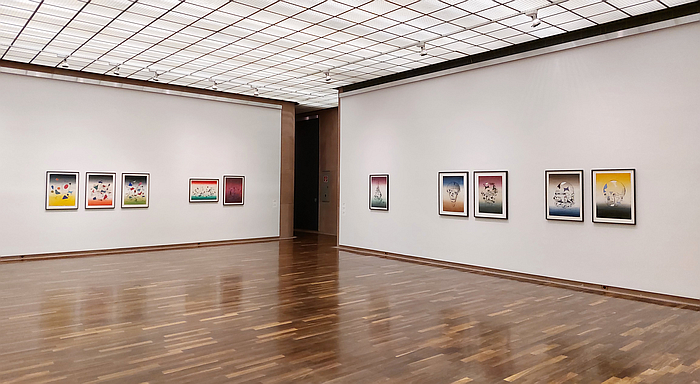
Born in Basel, Switzerland, on March 25th 1904 as the second child to Polish merchants Benjamin and Regina, Alexander 'Xanti' Schawinsky began to train as an architect in Cologne in 1921 before the aforementioned 1923 visit to the Bauhaus Woche, that first major Bauhaus exhibition, that first major public elucidation of Bauhaus, inspired him to enrol at Bauhaus Weimar. If a move to Weimar that didn't occur until the start of the 1924 summer semester, a delay largely, one gets the impression, on account of the cultural distractions, for all the theatres, the young Xanti met in the Berlin he travelled on to after Weimar; a Berlin where he initially continued his architectural training before in the spring of 1924 the pull of Weimar became too strong.
A spring of 1924 that was not only important in the biography of Xanti Schawinsky, but that was in the midst of an important period in the biography of the Bauhauses, a period instructive in appreciations of there being Bauhauses; being as it was not only after the decline of the more esoteric, and for all Mazdaznan, influences on the early Weimar incarnation, nor only as the Kunst und Handwerk eine neue Einheit, Art and Craft a New Unity, of the early years became Kunst und Technik eine neue Einheit, Art and Technology a New Unity, but shortly before its enforced move to Dessau in 1925. A move Schawinsky also made, and a Bauhaus Dessau which, in many regards, is where Play, Life, Illusion. Xanti Schawinsky begins with, amongst other works, costume designs, stage designs and theatrical productions; works that help underscore the importance of the Bauhaus Dessau Stage Workshop in the development of Schawinsky, and works, in many regards, defined by their experimental questioning and challenging, their experimenting with future possibilities, their experimental future.
From Dessau Play, Life, Illusion follows Xanti Schawinsky's professional and personal journey first to Black Mountain College in North Carolina, an arts and crafts college established in 1933 that while not exactly an attempt to maintain the Bauhaus spirit following the closure of the Berlin Bauhaus in the same year, a closure, primarily, on account of pressure from the NSDAP, does intersect with the Bauhauses in numerous locations, not least in context of its teaching staff, which aside from from Schawinsky who taught drawing, painting, design fundamentals and, and arguably most importantly, Stage Studies, also included the likes of Josef Albers, Anni Albers, Lyonel Feininger or Walter Gropius. And subsequently on to the New York Schawinsky called home for the greater part of the decades between 1938 and his death in 1979; a New York where aside from continuing his own creative career he also held teaching positions at institutions such as Brooklyn College or New York University.
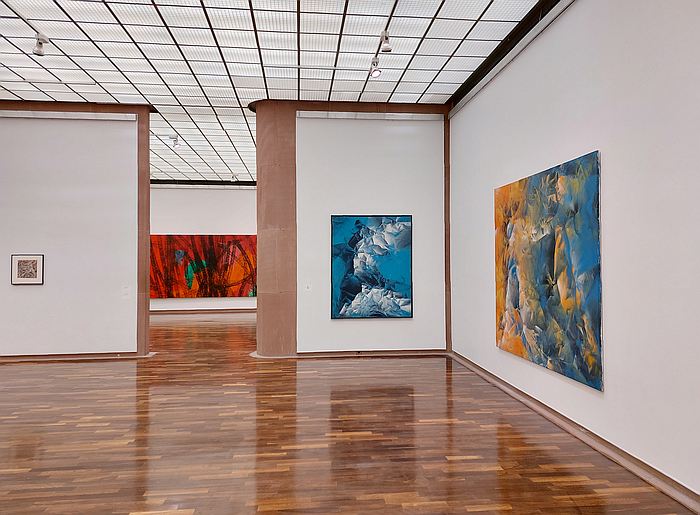
A personal and professional journey that along its route helps elucidate the vast scope of Xanti Schawinsky's canon featuring as it does examples of his theatre/stage work, most notably his Spectodrama, or more accurately Spectodramas, a collective term portmanteaud from 'specto', to observe, to watch, to gaze on + 'drama', Schawinsky employed to describe his experimental stage works, his position of "the stage as a laboratory"2, that he began to develop in Weimar, arguably pre-Weimar in Berlin, and continually developed over his numerous stations, most notably at Black Mountain College; examples of the advertising work he produced in Italy during his brief stop there after leaving Germany in 1933 and before arriving in America in 1936, including examples of his work for Illy Caffè, Fernet Branca or Olivetti, the latter for whom he also co-designed at least one typewriter, an infrequent foray into product design in the Schawinsky canon, and a genre not present in Play, Life, Illusion. And also examples of the myriad artistic genres in which he was active over the decades, including photography, collage, and painting in its widest definition and in a variety of materials.
The latter an aspect of Schawinsky's canon given plenty of space in the final chapters of Play, Life, Illusion with their focus on what the curators refer to as Prozessbasierte Malerei, Process-oriented Painting, a collection of experimental works realised between the 1940s and 1970s in which, as the name implies, the process takes the lead: sometimes in a Surrealist, uncontrollable manner such as his works realised in smoke and oil on Pavatex, a Pavatex, a fibreboard, not uninterestingly, developed in Switzerland in the 1930s that Schawinsky's fellow Schwiizer Willy Guhl had used in the 1930s for affordable furniture, and sometimes in a manner in which the conscious intervention of Schawinsky in the process, the inter-play between Schawinsky and process, and material, defines the end result, including his varied use of spray paint.
And experimental final chapters, experimental final decades, that help reinforce that the experimentation, the experimental questioning and challenging, that is tangible in much of Schawinsky's earliest works remained with him over the decades, and therefore to allow one to approach Xanti Schawinsky as a particularly informative example of the experimentation that was such a central component of much of the Bauhauses. Experimentation that is largely absent in the popular contemporary Bauhaus image with its strict control of geometry, light, shade and its achromatic sobriety.
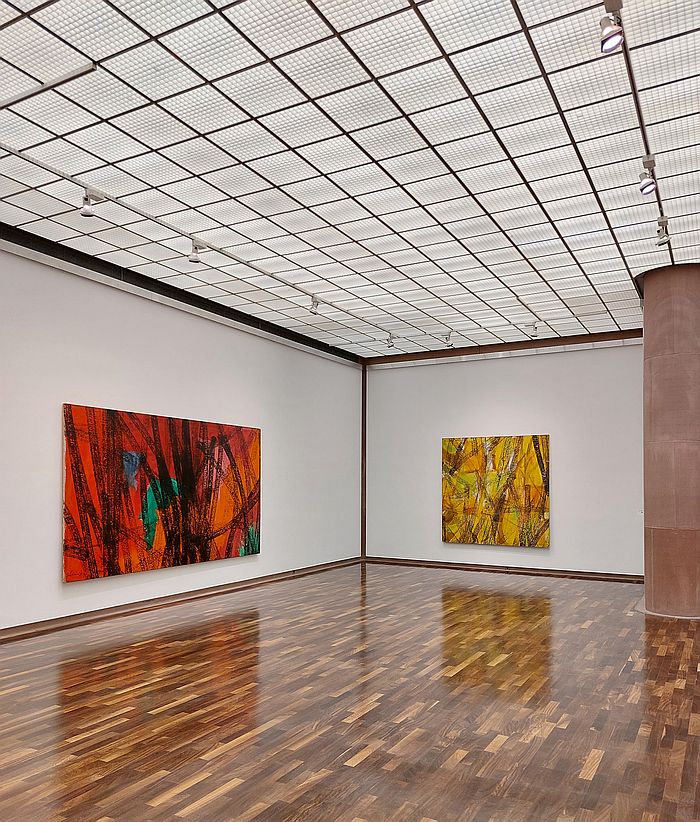
An experimentation at Bauhaus that unquestionably was also at the core of the Bauhauskapelle, that unofficial official Bauhaus party band who, as noted in context of the Radio smow Bauhaus Playlist, produced what, by all accounts, was an experimental jazz and folkloric and Dada influenced noise, which we image was just delicious, but of which no known recordings exist, a Bauhauskapelle that was founded in Weimar before Schawinsky arrived, which was very much present in context of the fateful 1923 Bauhaus Woche, and of which Schawinsky became an important member following the move to Dessau; and a Bauhauskapelle that was our introduction to Xanti Schawinsky, that first contact that "fully ignited" our interest in Schawinsky and his work. And his (lost) music. And a Bauhauskapelle that appears briefly, blick-and-you'll-miss-it-briefly in Play, Life, Illusion, including via an undated appeal, possibly written by Schawinsky, for donations to enable the purchase of a saxophone, a still relatively novel instrument in the late 1920s, an instrument the NSDAP denounced, and almost banned, in the 1930s for overtly racist reasons, an instrument required by the Bauhauskapelle because, "das kind will geschaukelt werden"3, 'the child [Bauhauskapelle] wants to be rocked', an indication perhaps of a change of direction driven by Schawinsky. And an appeal, as one can read, that was responded to by, amongst others Marcel Breuer, Wassily Kandinsky, Walter Gropius, Feiniger Senior and Junior, and by Schawinsky himself. Thus a nice example of the Bauhauses as a community as much as schools.
That Xanti Schawinsky did get his saxophone being confirmed by a 1928 photo of him with it by T. Lux Feininger, that Feininger Junior and a fellow Kapellest, one of a collection of photos that greet visitors to Play, Life, Illusion including one of Schawinsky with Isa Gropius and Herbert Bayer in Ascona in 1930, one from somewhere in Dessau in 1928/29 of Schawinsky with the so-called alten Bühnengefährten, Old Stage Companions, whose number include Max Bill and Joost Schmidt, or one of Schawinsky balancing precariously on a balcony in Dessau. Or a shot by László Moholy-Nagy of Schawinsky on the Maggia Bridge, Locarno, in 1933, looking every bit the chiselled, toned, ideal man of Ancient Rome. And of the Fascist imagery of the early 1930s. That ever instructive comparison. If a collection of photos that doesn't feature the photo by Feininger that can be found in the accompanying Play, Life, Illusion publication of Xanti Schawinsky doing the Charleston on the roof of Bauhaus Dessau while Clemens Röseler plays the banjo. Which is as delicious a shot as it sounds. And thus photos that tend to help locate Xanti Schawinsky as much physically, personally, at the centre of the Bauhauses as his work locates him metaphysically, conceptually, at the centre of the Bauhauses.
If an experimentation that isn't universally present in Play, Life, Illusion. There is something disturbingly normal, non-experimental, safe, about his advertising work; the palpable differences to the rest of the works on show tending to deny that they are by Schawinsky, argue it ain't Schawinsky's work. But it is. And in being such helps demonstrate an artist who very clearly knew how to produce mainstream popular works, knew the processes, knew the aesthetics, knew the rules but had no interest in such. Unless, we suspect, doing such helped him to pay the bills, as, inarguably, he would have needed to have done upon his arrival in Italy; an Italy at that time very much under the control, the cult, of a Benito Mussolini who one can't imagine was particularly keen on experimental art. Despite his numerous flirtations with Futurismo. And thus safe advertising works that also underscore how fortuitous it was, for him and us all, that on his arrival in America Schawinsky was able to once again continue his experimentation.
If, arguably, dependent on his teaching work to pay the bills: we no know for certain, we weren't there, but we do know that for all the more experimental end of creativity may drive creativity, drive culture's relationships with society, as a rule no-one wants to pay for it. Certainly rarely during the creative's life-time.
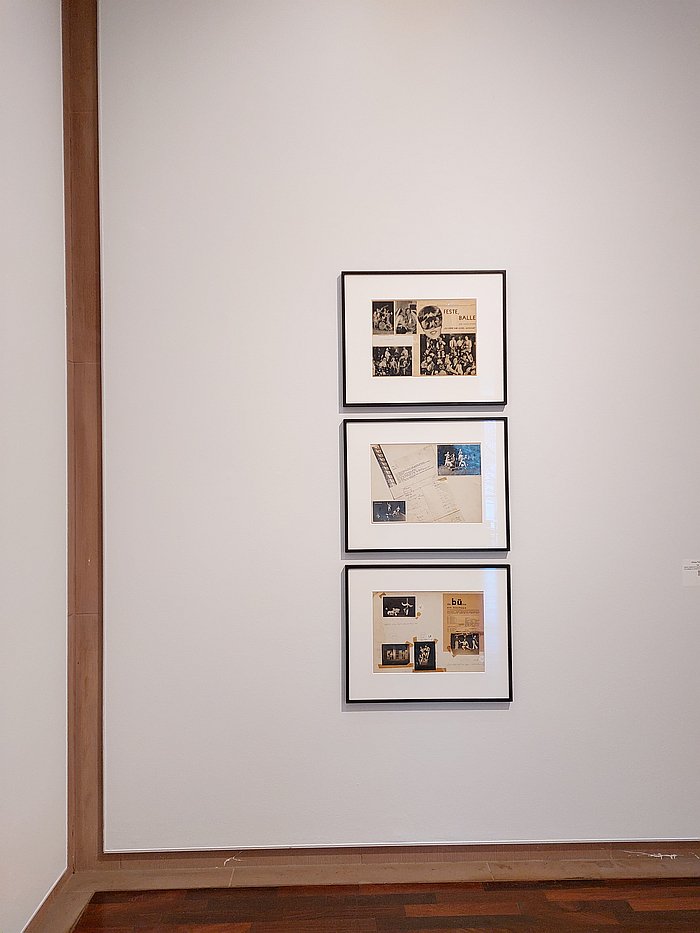
A largely wordless presentation that prefers to communicate via the works, prefers to let Xanti Schawinsky converse directly with visitors rather than via the filter of a curator, Play, Life, Illusion is not only an expansive introduction to Xanti Schawinsky and his place in the (hi)story of creativity, one very neatly expanded by the intervention Kontext:Bauhaus with its presentation of works from the Kunsthalle Bielefeld's collection by, amongst others, Josef Albers, Oskar Schlemmer or László Moholy-Nagy, but also an excellent opportunity to get up close with your new favourite Xanti Schawinsky work. A rare opportunity, Xanti Schawinsky shows don't come round that often.
For our part we spent an inordinate amount of time with his 1970s spray paint on gauze and canvas works, double layered, 2 dimensional paintings, which no isn't a contradiction, works which genuinely move with you, change according to your perspective, and thus are nice examples of manual kinetic art, analogue kinetic art, an alternative take on Op-Art; or with his 1968 spray paint and acrylic canvases which do posses an engaging 3 dimensionality, an engaging implied-but-not-actual 3 dimensionality, an implied-but-not-actual dynamism, and which hang in Bielefeld as depictions of storm clouds opening to reveal the light of Heaven as if stolen from the roof of an Italian Renaissance chapel.
Or his 1924 sketch Tap dancer versus Tap Machine, a work from his earliest Bauhaus Weimar days which in its depiction of a tap dancer standing face-to-interface with a mechanical tap dancing machine reinforces that the challenge of the novel to the established, the threat of the machine to traditional creativity, the need to redefine the established in context of the novel, ¿Kunst und Technik eine neue Einheit? ¿Or a conquering of the former by the latter?, that we all believe to be a novel aspect of the contemporary age, to be unique to the 21st century, isn’t. Has been around as long as human society has been developing technology. And will continue to be an issue. Thus it might be time to try to learn some lessons from the past rather than being repeatedly overwhelmed whenever the challenge arises.
Yes, we have Tap Machines, what does that mean?
Yes, we have AI, what does that mean?
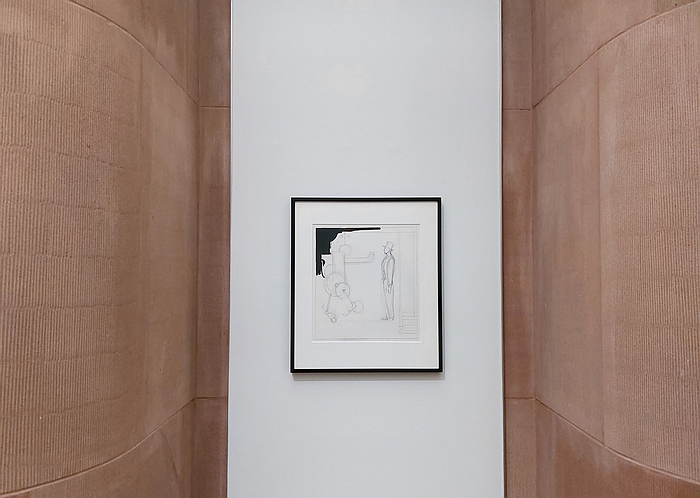
Similarly strikingly contemporary is Schawinsky's 1942 Gesichter des Krieges, Faces of War, series which depicts war machines where the arrangement of the armaments bequeaths them human faces: a reminder that humans wage wars not machines that was an important reminder at that time, see also Chaplin's final speech in The Great Dictator, and a reminder that is even more apposite today, Schawinsky's Soldier could actually be a contemporary autonomous war robot. Which is a vision of the future becoming reality, an experimental future becoming reality, we don't believe for a minute is what Xanti Schawinsky intended the work to be. It's what human society in all its wisdom and intelligence and experience has made it.
And a Gesichter des Krieges series that needs must be considered in context of the contemporaneous Camouflaged series that is juxtaposed with it in Play, Life, Illusion, a Camouflaged series depicting, for example, a town or an anti-aircraft gun position, camouflaged by colourful abstract forms reminiscent of components of an Alexander Calder mobile or an Isamu Noguchi sculpture, or indeed a reduced abstraction of a Wassily Kandinsky's or a Paul Klee's expressionism; a Camouflaged series that in all probability was realised in context of Schawinsky's tenure with the so-called Visual Problems Unit of the Army Air Corps during which he developed actual camouflage patterns. A utilisation of Xanti Schawinsky's experimentation for the reality of war that not only reminds that in times of social danger, be that war, dictatorships, environmental collapse, whatever, creatives can't remain neutral, their contribution will assist one side or the other, they must make an active choice, but also reminds that fighting wars and defending nations is about more than raw military power. While posing the question if the utilisation of the experimental questioning and challenging of a Xanti Schawinsky couldn't allow us to avoid not only wars but all the other destructive habits of human society.
¿Where could a more nuanced reading of the work of a Xanti Schawinsky take us?
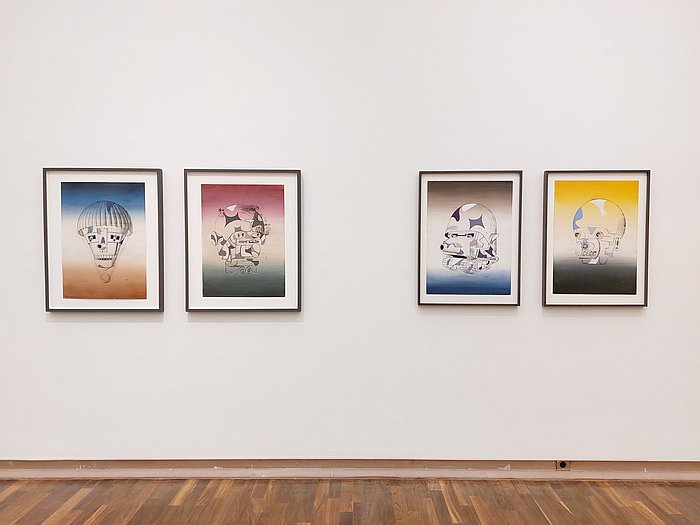
Originally shown in, and developed in cooperation with, Mudam, Luxembourg, it is highly appropriate that Play, Life, Illusion is being shown in the Kunsthalle Bielefeld, an institution housed in a compact monolith by Philip Johnson, an architect who through his role at MoMA New York in the early 1930s, and his wider mediating of a simplified narrative of the Bauhauses in 1930s America, was a key figure in helping establish the contemporary distorted view of the Bauhauses, the Bauhauses as Bauhaus, as the compact monolith the institution is celebrated, mythologised, as today. A Bauhaus that is quadratic, Constructivist, that is a strict control of geometry, light, shade, that is achromatic and sober. That isn't experimental, isn't the future, isn't saxophones, isn't Charlestons on the roof of that most sacred of buildings. That isn't Xanti Schawinsky. A contemporary Bauhaus in which there is no place for a Xanti Schawinsky.
Play, Life Illusion elucidates that Xanti Schawinsky was very much the Bauhauses. The Bauhauses as they were, not as a Philip Johnson, amongst others, helped them become.
Thus making Philip Johnson's compact monolith in Bielefeld an apposite location for a reminder of the disparity between the Bauhauses as they were and Bauhaus as it is remembered. An important reminder in a year that the Bauhaus Dessau where Xanti Schawinsky began to come into his own will launch its centenary celebrations; an opportunity to actively deconstruct the contemporary view on the Bauhauses, to actively challenge the lazy use of the term Bauhaus.
Xanti Schawinsky is an excellent conduit for such a process. If a conduit a great many, far too many, are unfamiliar with; a great many, far too many, of us would respond in the negative if a Niels Peterson were to ask if they knew a creative called "Schawinsky".
Much like travelling to Weimar in 1923 was worth it by way of learning more, so to is travelling to Bielefeld in 2025.
For whatever else it is and does, Play, Life, Illusion very satisfyingly allows for an introduction to, a stimulation to become better acquainted with, a creative whose own canon is not only instructive and informative in context of the (hi)story of art in the 20th century, nor only who through his teaching was an influence on a generation of creatives much as a Josef Albers, a Paul Klee, an Oskar Schlemmer et al influenced Schawinsky, that passing on from generation to generation, and evolution from generation to generation of that which is passed on, that is so crucial to human society and which is why we shouldn't fear, but very much should question, Tap Machines; but also a creative active across a wide variety of genres who through his positions and approaches, and the manner in which those positions and approaches unite and diverge in those widely varied genres, remains relevant, instructive and informative today, in terms of creativity, of society and the complex relationships between creativity and society.
A creative active across a wide variety of genres who may have remained an architect had Niels Peterson not asked him one fateful summer's day in 1923 if he "knew a school in Weimar called 'Bauhaus'".......
Play, Life, Illusion. Xanti Schawinsky is scheduled to run at Kunsthalle Bielefeld, Artur-Ladebeck-Straße 5, 33602 Bielefeld until Sunday June 15th.
In addition an accompanying publication via which Xanti Schawinsky comes directly to word via extracts from various texts, is available through Hirmer Verlag, Munich.
Full details can be found at https://kunsthalle-bielefeld.de
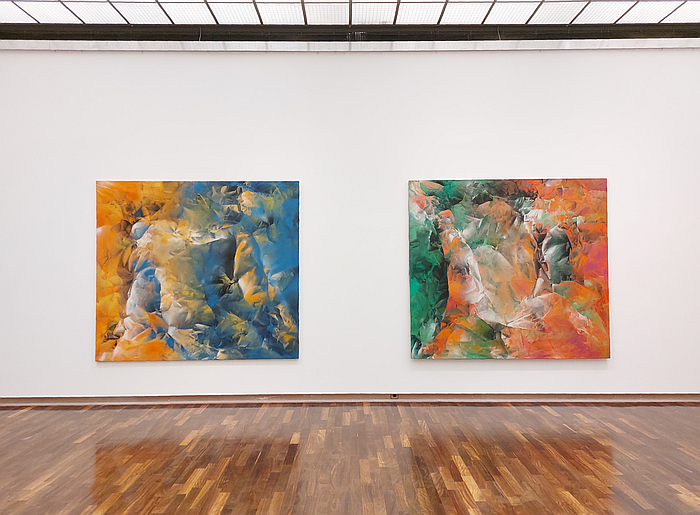
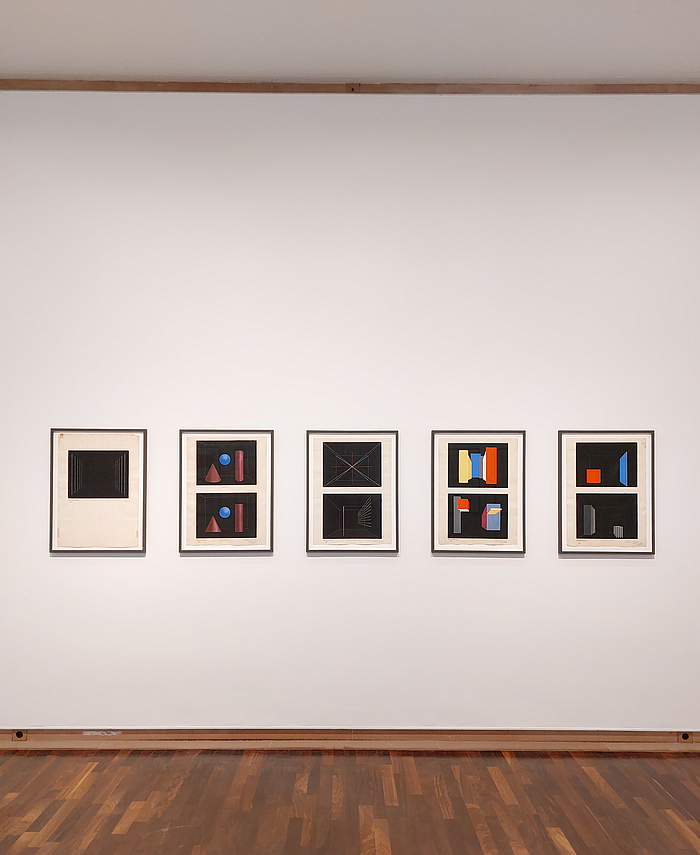
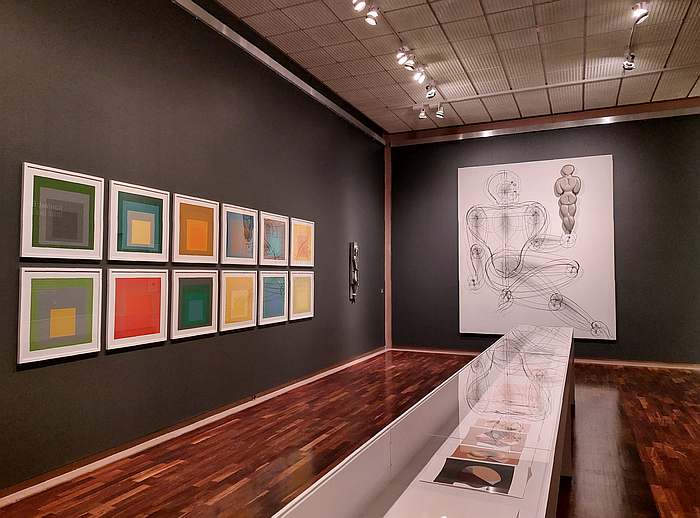

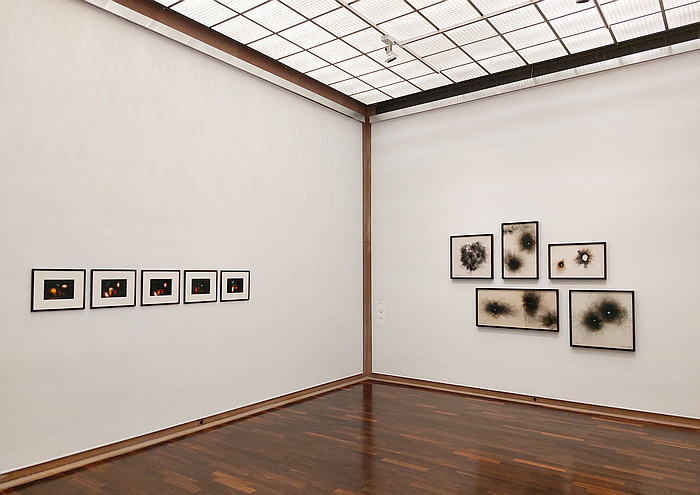
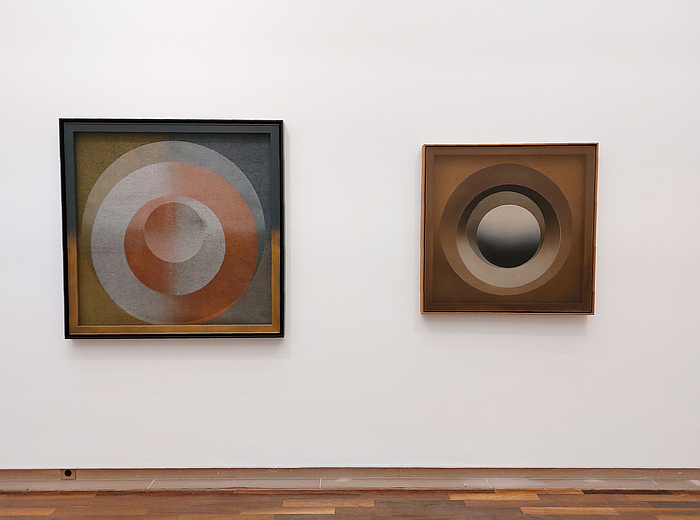
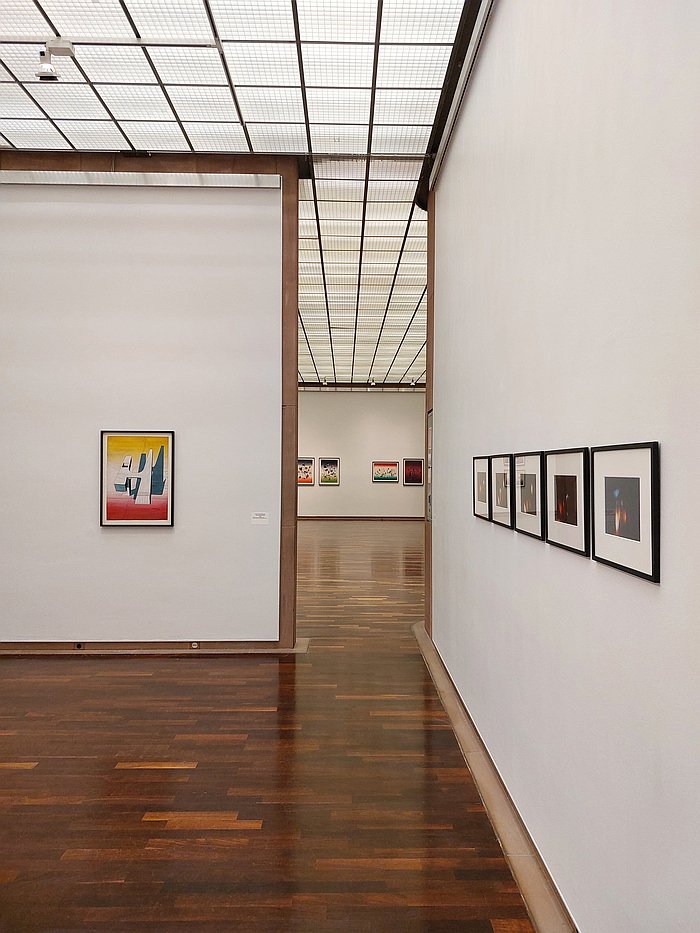
1Xanti Schawinsky, Memories, ca.1970, as reprinted in Daniel Schawinsky and Torsten Blume [Eds.] Xanti Schawinsky. Play Life Illusion A Retrospective in Texts, Letters and Images, Hirmer Verlag, Munich, 2024 page 45. On page 91 there is an extract from a 1928 interview with Schawinsky in which he refers to 'Niels Peterson' as 'Harald Petersen', which given its contemporaneousness is arguably the correct name. Yet regardless of whether 'Niels Peterson' or 'Harald Petersen' he is/was a tennis coach.
2Xanti Schawinsky, From Bauhaus-Happening to Spectodrama, 1967, as reprinted in ibid page 144
3Undated appeal for donations as featured in Play, Life, Illusion. Xanti Schawinsky